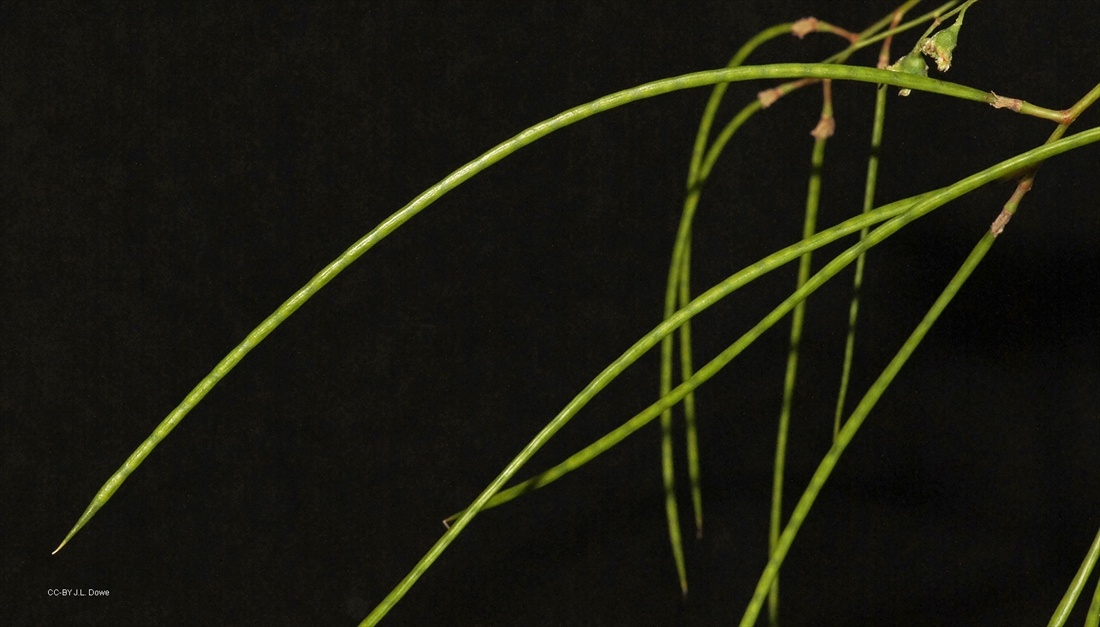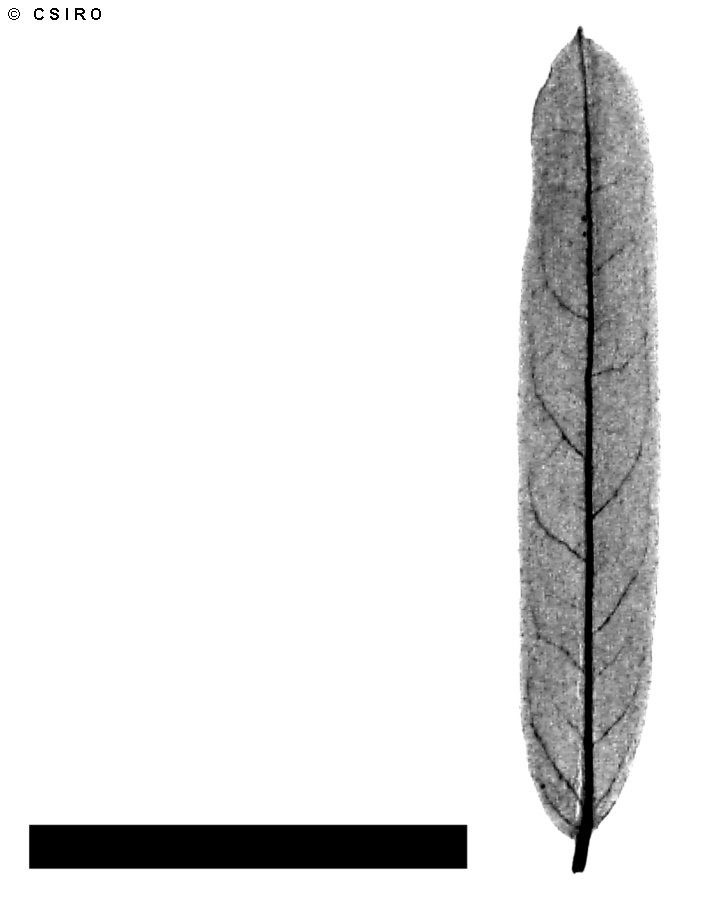Australian Tropical Rainforest Plants - Online edition
Sesbania cannabina (Retz.) Poir.





Poiret, J.L.M. (1806) Encyclopédie Méthodique, Botanique 7: 130.
Yellow Pea Bush; Sesbania Pea
Usually flowers and fruits as a shrub about 1-2 m tall.
Stipules narrowly triangular, about 5-6 mm long. Leaflet blades about 5-22 x 1.5-5 mm.
Pods cylindrical, long and narrow, about 120-200 x 2-3 mm, slightly constricted between the seeds when dry. Seeds about 38 per pod, +/- cylindrical, about 3-4 x 1-2 mm, hilum lateral. Cotyledons green.
Cotyledons broadly oblong, about 15-17 x 6 mm, petioles 1.5-2 mm long. First leaf simple, oblong, elliptic to slightly obovate, about 17 x 5.5 mm, apex mucronate, base obtuse, petiole about 2 mm long. Second leaf compound with about 8 opposite leaflets. Leaflets oblong to elliptical, about 13.5-16 x 4-4.5 mm, apex mucronate, base obtuse and oblique. At the tenth leaf stage: leaves compound with 40 or more leaflets in each leaf, leaflet blades oblong with a mucro at the apex. Stipules narrowly triangular, about 7 mm long. Small peg-like glands present on the upper surface of the compound leaf axis at the point of attachment of each leaflet. Seed germination time 8 days.
Occurs in WA, NT, CYP, NEQ, CEQ and southwards to Victoria and South Australia. Altitudinal range from near sea level to 300 m. Often growing in saline situations on heavy clay soils in open forest but occasionally found on the margins of rain forest, monsoon forest or vine thickets. Also occurs in Africa, India, China, Malesia and the Pacific islands.
Low to moderate palatability. Tolerant of salinity and alkalinity. May cause weed problems on heavy soils under irrigation. Hacker (1990).
Aeschynomene cannabina Retz., Observ. Bot. 5: 26(1789). Sesbania australis F.Muell., Transactions and Proceedings of the Victorian Institute for the Advancement of Science 1: 36 (1855), Type: "on the Darling River.".





